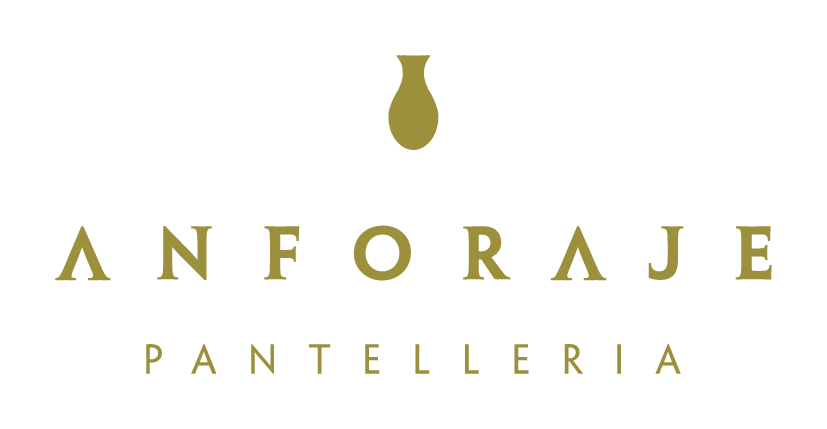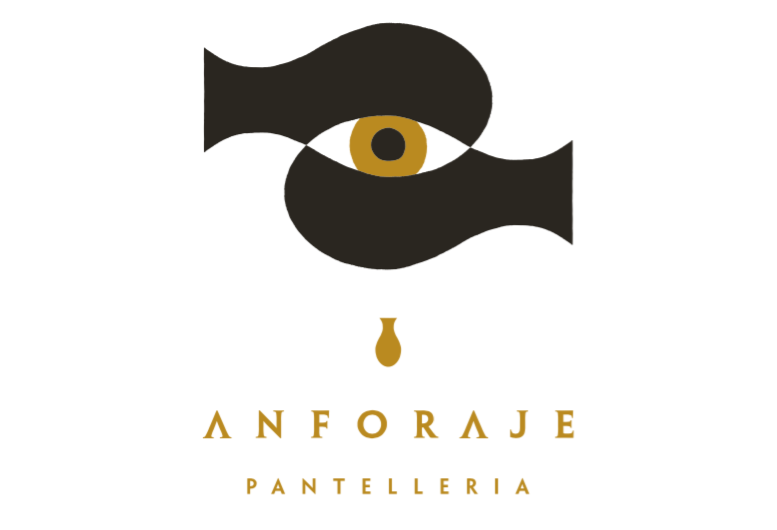THE LANDSCAPE LIVES IN WINE AND ART,
WINE IS ALIVE AND ART IS IMMORTAL.
BIANCHI - FABIETTI - PASSI - SGANZERLA
THE ART OF TELLING WITHOUT WORDS
MAGNUM CERAMIC
It all began. . . drinking Anforaje
Wine has a personal interpretation like art.
A collaboration between four artisans where painting and ceramics find a different connection through wine.
Bottle instead of canvas, where the wine is the soul of the painting, the installation reflects the terroir of the island where everything comes from.
This is how we tried to trap the feeling of the island, even deeper.
To be able to taste it, touch it, look at it and imagine beyond.
The island of Pantelleria
JE
Instagram @anforaje
I found my “soul-terroir" far from home, on the island of Pantelleria.
Chef by trade, my interest in wine was born during the years I spent in Spain.
My roots are not "ungrafted", neither Pantesco nor Sicilian, I was born in Milan.
Pantelleria seduced me and changed my perspective of life.
The idea I have of wine is closer to the concept of food than to that of drink; I am a guy who makes his own wine, with the aim of trapping the feeling that the island arouses in me, so that I can take it with me in a bottle, when I cannot stay.
Making wine makes me feel happy.
A wine that pleases me first and foremost,
because after all it is my wine, but just as important,
a wine to share.
Edoardo Passi
www.edoardopassi.com Instagram @edoardoleepassi
I live and work in Milan, where I opened a ceramics workshop.
I specialize in functional objects made with the lathe and in casting, designing my own shapes and recreating objects.
I also develop molds and ceramic objects.
The box is inspired by the kurinuki technique, where a solid block is sculpted and rough-hewn by cutting and tearing portions of the clay to achieve the desired shape. I used this technique to best express the wild land, bristling cliffs and hues of the island where Anforaje is produced.
From the full sculpted block, I produced a mold to allow for the production of a small limited run, like the wine it contains.
Pietro Sganzerla
sganzerlapietro@gmail.com Instagram @pietro_sganzerla
Pietro Sganzerla, born in Milan in 1985, grows up in a creative environment and approaches art since childhood.
His work is based on a dual research, ranging from pictorial sign to materials. Expanding the expressive potential of ink drawing, in his graphic works Pietro chooses a language rich in suggestions derived from the art of engraving. Distinguished by a strongly individual and meticulous stroke, his drawings invite to the reading, to the decoding of the geography of the human and animal face, in a constant game of cross-references between physiognomy and calligraphy - as in Self-portraits (2015).
The investigation of the sign is accompanied by that of materials. Pietro's world is cahracterized by a loving use of paper in all its forms, from the purest to the recycled, from the lightest tissue paper to the heaviest papers, which are used not only as a drawing surface but also as a sculptural material. A new development in his exploration has led him to the use of ceramics to create his fantastic heads, concrete and abstract at the same time; never quite real, never quite invented.
Lorenzo Fabietti
lorenzofabietti.atelier@gmail.com Instagram @lorenzo_fabietti
My paintings belong to two distinct fields of research and series: landscapes ("Spaces") and human figures ("Heads").
The landscape series constitutes an exploration of the spatial dimension that aims to capture those places hidden behind everyday objects, details, and memories. Using multi-dimensional chromatic surfaces defined by sharp lines and strong color contrasts, I create spaces in which ineffable emotions and memories reside, the non-places of inner experience. The "Teste" series explores the dimension of personal identity on the border between uniqueness and seriality, between the dimension of the self and the collective imagination; each head is absolutely unique and at the same time serial. Playing with different chromatic structures, also experimenting with collage techniques, I create heads without a face but full of personality and emotional relief.
My preferred support materials are canvases and wooden boards; the colors are distributed in thick layers with different structural effects aimed at obtaining a tactile experience of the painting’s surface .
The Box is inspired by the kurinuki technique, where a solid block is sculpted and rough-hewn by cutting and tearing portions of the clay to achieve the desired shape. I used this technique to best express the wild land where Anforaje is produced. From the sculpted solid block I produced a mold, to allow for the production of a small limited series, like the wine it contains. E. Passi
Like diving headfirst into a deep underwater cavern through turbulent black waters, the Anforaje Zibibbo is profound. Vulnerability sets in when you can't see the bottom and the strong currents start pulling you towards the jagged black rock confines coated with sea urchins.
Coming up for air is a momentary grace. Mediterranean scrub and saline puffs ride the startling but warm scirocco wind that sweeps through your memories for summer sunsets past.
The golden hour sunlight casts reflections of amber on the waves. Beneath the surface, you sense the spirit of the ancient volcano.
Wines can be tasted to determine a sense of the terrain, but to evoke emotions unique to the landscape of the wines origin is rare. Anforaje is a place, a feeling, an experience.
The bouquet is elaborate and evolving. A distant aroma, of jasmine flowers and sweet almonds, flows in and out as dried stone fruits and balsamic undertones undulate delicately closer and closer in waves, glass by glass.
All the quintessential moscato characteristics are well-rounded in the wines steadfast foundation, while the island exposes it's rugged and wild landscape through the wines iconic Pantesco perfumes and savour. Everything you experience sensorially while in Pantelleria can be revealed in just one glass of this wine. The salty winds, the roadside stalks of finocchio selvatico (wild fennel) and their anise essence, the vanilla pipe tobacco-esque flavour of freshly-cured table capers are all yours for as long as the bottle lasts.
A wine made naturally with minimal intervention, but made well with a definitive structure. Jacopo's meticulous grape selections and tedious manual harvest techniques transmit an expression of the Pantelleria Zibibbo that is both particular and paramount.
Bask in it's warm vibrancy that stems from the wine's soft ripe apricot acidity and its fresh fichi d'india (prickly pear) fruit-forward finish. Moments after each sip, there is a specific savoury retronasal eccentricity that's identical to aroma to the wild oregano weeds that grow through the volcanic rocks throughout the island.
These flavours persist long after each sip, and long after the bottle is finished. Like questions about life that linger on until the end.



















